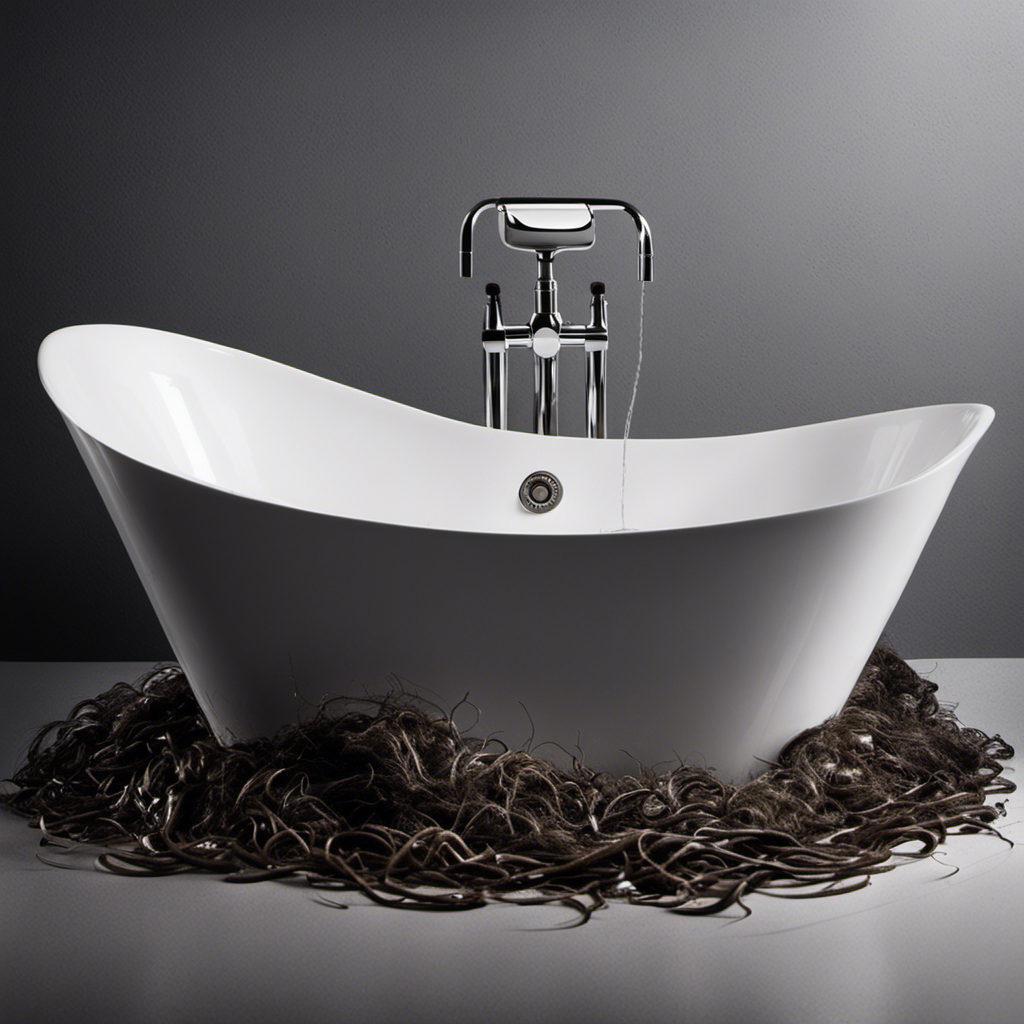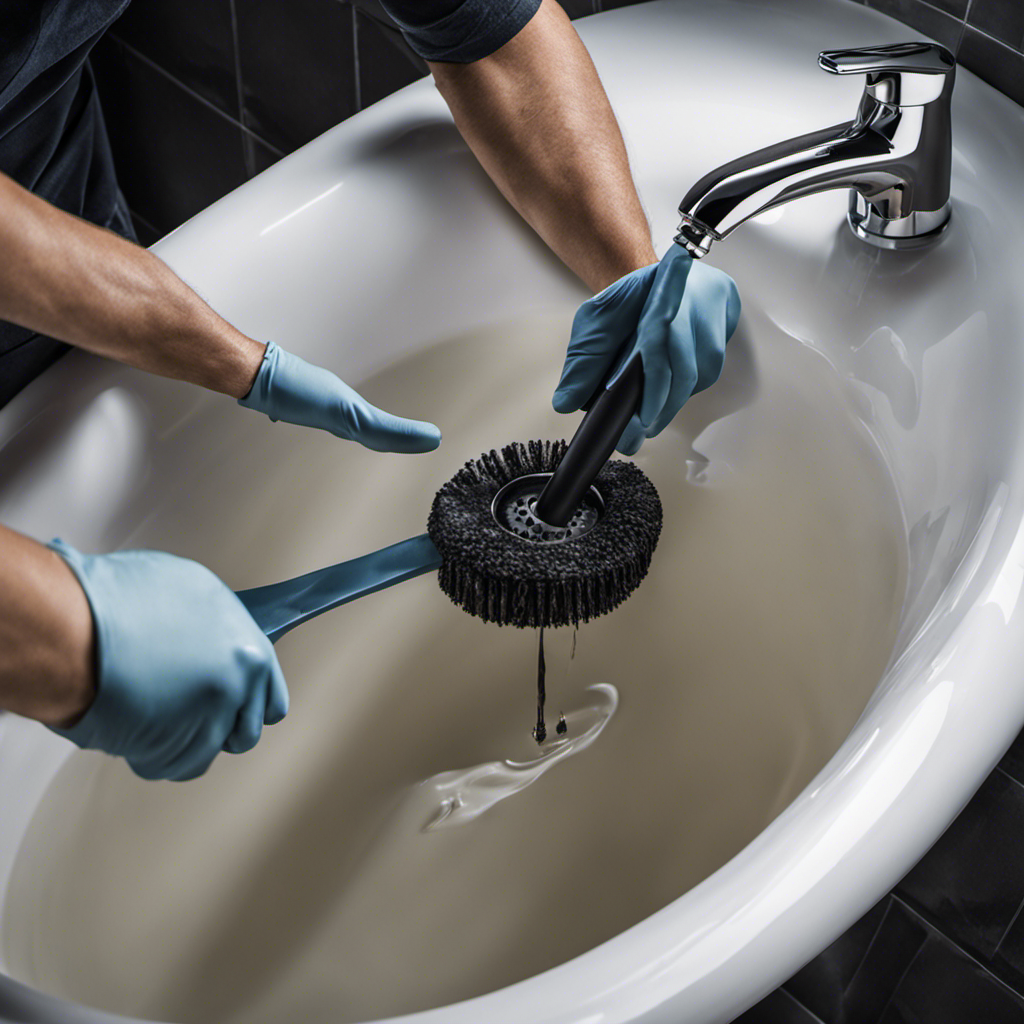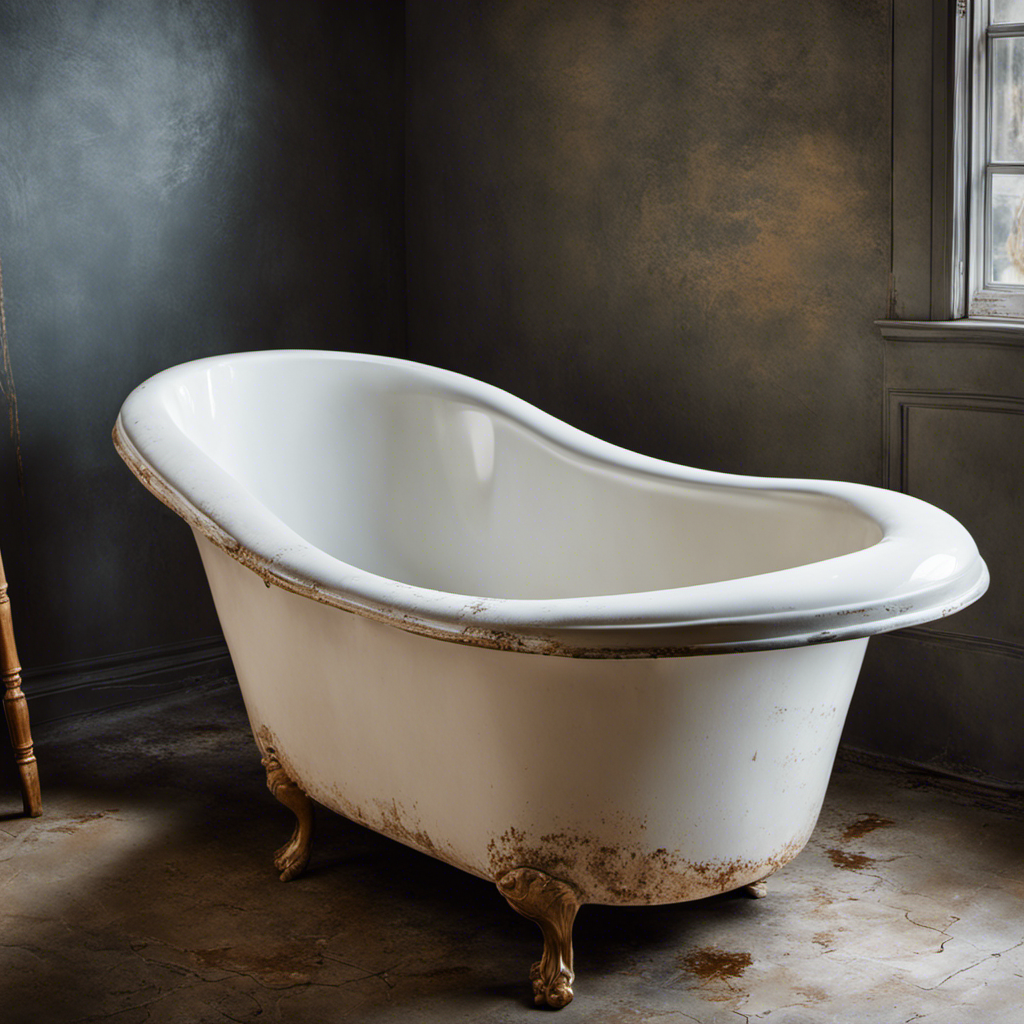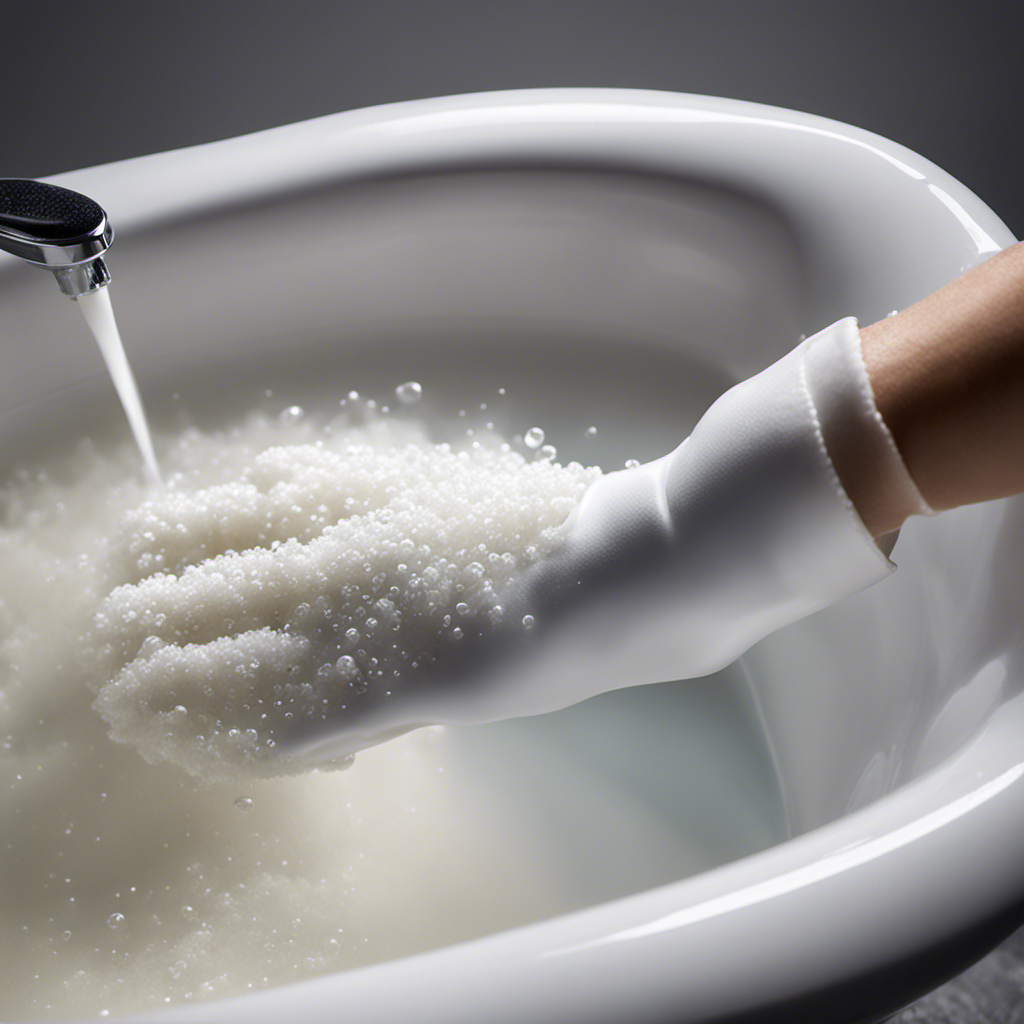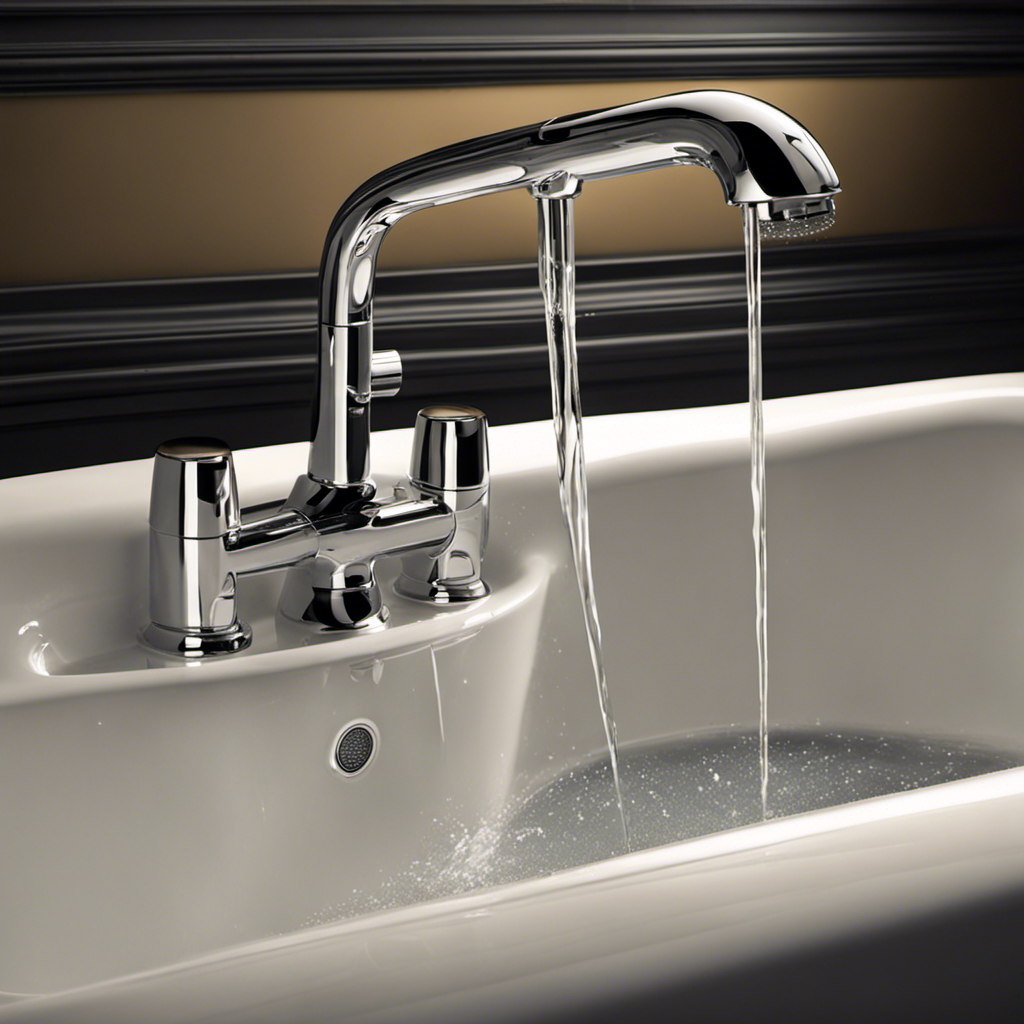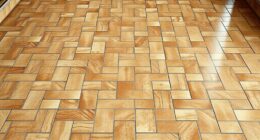As I relaxed in my bathtub, I noticed something amiss. The water was taking longer than usual to drain away, causing a minor inconvenience.
Intrigued, I delved into the reasons behind this sluggish drainage and discovered a wealth of information. In this article, I will share common causes of slow bathtub drainage, signs to look out for, and DIY solutions to improve the situation.
By the end, you’ll be equipped with preventive measures to maintain proper bathtub drainage and know when to call in a professional.
Let’s dive in!
Key Takeaways
- Common causes of slow bathtub drainage include hair clogging the drain, accumulation of soap scum and debris, mineral deposits in the pipes, and structural issues in the plumbing system.
- Signs and symptoms of a slow-draining bathtub include water pooling around your feet while showering, water taking a long time to drain after pulling the plug, gurgling noises coming from the drain during drainage, foul odors emanating from the drain, and slow drainage in multiple fixtures in the house.
- DIY solutions to improve bathtub drainage include using a plunger to remove clogs, employing a drain snake to clear debris, utilizing a mixture of baking soda and vinegar to unclog the drain, flushing the drain with hot water to clear remaining debris, and installing a drain cover to prevent hair and debris from entering the drain.
- It is important to call a professional for slow bathtub drainage to prevent water damage, maintain a healthy plumbing system, promote a clean and hygienic environment, identify and resolve underlying issues, and avoid further complications and costly repairs.
Common Causes of Slow Bathtub Drainage
One of the most common causes of slow bathtub drainage is hair clogging the drain. When we wash our hair in the shower, loose strands often get trapped in the drain, gradually building up over time. These hair clogs can prevent proper water flow, leading to slow drainage.
Another cause of slow bathtub drainage can be structural issues within the plumbing system. Over time, pipes can develop cracks or become misaligned, impeding the smooth flow of water. These structural issues can also contribute to clogs and blockages.
Understanding the common causes of slow bathtub drainage is important in order to address the issue promptly.
Now, let’s explore the signs and symptoms of a slow-draining bathtub.
Signs and Symptoms of a Slow-Draining Bathtub
To figure out if your bathtub is draining slowly, you might notice water pooling around your feet while taking a shower. This is one of the common signs that your bathtub is not draining efficiently. Other signs to look out for include:
- Water taking a long time to drain after the plug is pulled.
- Gurgling noises coming from the drain when the water is draining.
- Foul odors coming from the drain.
If you are experiencing any of these signs, it’s important to address the issue promptly to prevent further damage.
There are a few potential solutions to a slow-draining bathtub. You can try using a plunger to remove any clogs, or you can use a drain snake to clear out any debris. If these methods do not work, it may be necessary to call a professional plumber to assess and resolve the issue.
DIY Solutions to Improve Bathtub Drainage
If you’re looking to improve the drainage in your bathtub, a simple DIY solution is to use a mixture of baking soda and vinegar to unclog any potential blockages.
This natural remedy for clearing bathtub drains is effective and inexpensive. To start, pour about half a cup of baking soda down the drain. Follow this with half a cup of vinegar and immediately cover the drain with a plug or a towel to prevent the mixture from bubbling out.
Leave it for about 30 minutes, allowing the mixture to work its magic. Finally, flush the drain with hot water to clear any remaining debris.
This DIY tool is an easy and eco-friendly way to unclog a slow-draining bathtub without the need for harsh chemicals or expensive plumbing services.
When to Call a Professional for Slow Bathtub Drainage
When the water in your bathtub is taking an unusually long time to go down the drain, it may be time to call a professional. Slow bathtub drainage can be a sign of a more serious underlying issue that needs immediate attention. Here are three reasons why regular bathtub maintenance and addressing slow drainage is crucial:
-
Prevents potential water damage: Ignoring slow bathtub drainage can lead to water pooling around the tub, which can seep into the floors, walls, and other structures. This can cause extensive damage and costly repairs.
-
Keeps your plumbing system healthy: Regular maintenance helps identify and fix any blockages or clogs in the pipes, preventing further damage to the plumbing system and ensuring it functions efficiently.
-
Promotes a clean and hygienic environment: A slow draining bathtub can result in standing water, creating a breeding ground for bacteria and mold. Regular maintenance helps maintain a clean and healthy bathroom environment.
Ignoring slow bathtub drainage can have severe consequences, ranging from water damage to health hazards. Therefore, it is essential to address this issue promptly to avoid further complications.
Preventive Measures to Maintain Proper Bathtub Drainage
Regular maintenance helps keep your bathtub drainage system functioning properly and prevents potential issues. By following a few simple preventive measures, you can ensure that your bathtub drains smoothly and efficiently.
One important step is regular cleaning. Use a drain cleaner specifically designed for bathtubs to clear any buildup and prevent clogs.
Additionally, using drain covers can help filter out hair and debris, keeping them from entering the drain and causing blockages. These covers are inexpensive and easy to install, providing an extra layer of protection for your drainage system.
Conclusion
So there you have it, folks! Slow bathtub drainage may seem like a minor inconvenience, but it can quickly turn into a major headache. Don’t let your bathtub become a swampy mess!
By identifying the common causes, recognizing the signs, and implementing DIY solutions, you can restore proper drainage and keep your tub flowing smoothly. And remember, if all else fails, don’t hesitate to call in the professionals.
Preventive measures are key to maintaining a happy, efficient bathtub. Keep those drains clean, and enjoy your bathing experience to the fullest!
